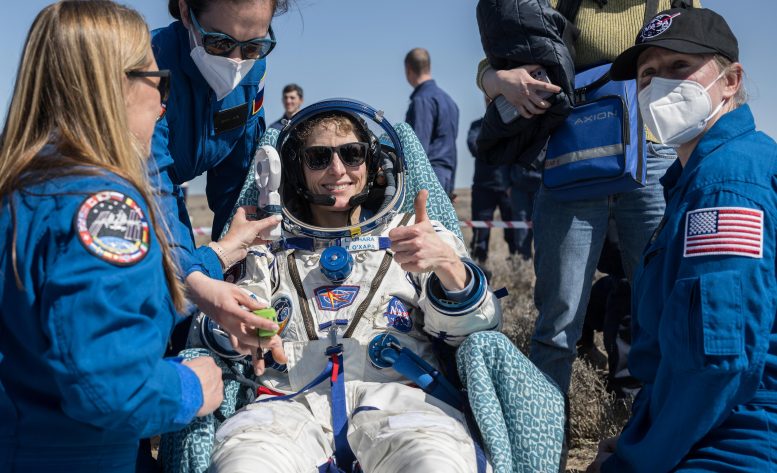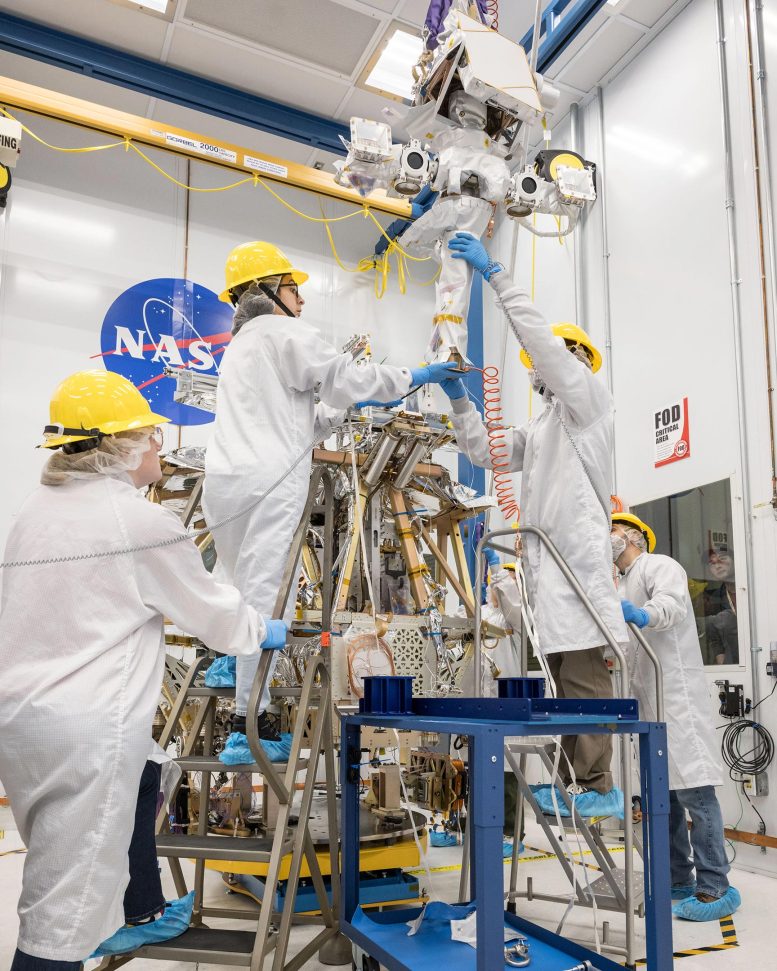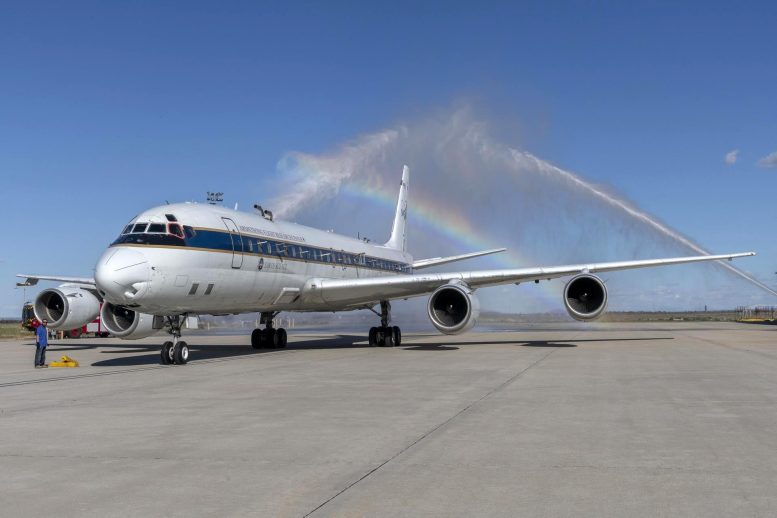Bailey’s pearls and solar prominences are visible in Dallas, Texas, on Monday, April 8, 2024, shortly after totality. A total solar eclipse swept across a narrow swath of the North American continent from the Pacific coast of Mexico to the Atlantic coast of Newfoundland, Canada. A partial solar eclipse was visible across the entire North American continent, as well as parts of Central America and Europe. Photo credit: NASA/Keegan Barber
Following the shadow of the total solar eclipse…
A NASA Astronaut returns safely from the space station…
And NASA’s lunar robot is getting new hardware…
A few stories I can tell you – This week at NASA!
Coverage of the 2024 total solar eclipse
NASA provided comprehensive coverage of the April 8 total solar eclipse from locations across North America, as the moon’s shadow traveled from Mexico across the U.S. from Texas to Maine and through parts of Canada. In addition to views from the ground, there are also views of Earth from a NASA science aircraft and even the International Space Station showed the shadow of the moon passing over cities and towns along the path of totality.
A total solar eclipse occurs when the Moon passes between the Sun and Earth, completely obscuring the Sun’s surface.

NASA Expedition 70 astronaut Loral O’Hara is seen outside the Soyuz MS-24 spacecraft after she, Roscosmos cosmonaut Oleg Novitskiy and Belarusian space participant Marina Vasilevskaya in a remote area Saturday, April 6, 2024 O’Hara returns to Earth after spending 204 days in space aboard the International Space Station as a member of Expeditions 69-70, and Novitskiy and Vasilevskaya return after the last Spent 14 days in space. Photo credit: NASA/Bill Ingalls
NASA astronaut Loral O’Hara returns from the space station
On April 5, NASA astronaut Loral O’Hara and two crew members boarded a Soyuz spacecraft and undocked from the International Space Station. The next day, the trio managed a safe parachute landing in Kazakhstan.
O’Hara spent six months aboard the station, supporting NASA’s Artemis campaign and working on various science activities. This was her first space flight.

A team of engineers lifts the mast into place on NASA’s VIPER robotic lunar rover in a clean room at NASA’s Johnson Space Center in Houston. Photo credit: NASA/Helen Arase Vargas
VIPER Robotic Moon RoverTeam raises its mighty mast
The team building NASA’s VIPER lunar robot recently installed its mast. Rover drivers and researchers will use the mast-mounted instruments along with several science payloads to explore the Moon’s south polar region during the rover’s upcoming mission.
VIPER aims to help us better understand the origins of water and other resources in this region before sending astronauts to the Moon as part of NASA’s Artemis campaign.

The DC-8 aircraft returned to NASA’s Armstrong Flight Research Center Building 703 in Palmdale, California, on April 1, 2024, after completing its final Airborne and Satellite Air Quality Survey of Asia (ASIA-AQ) mission. The aircraft and crew were greeted with a ceremonial water salute by the U.S. Air Force Plant 42 Fire Department. Photo credit: NASA/Steve Freeman
NASA’s DC-8 completes final mission
NASA’s DC-8 aircraft was recently welcomed back to the agency’s Armstrong Flight Research Center after completing its final mission. As the largest flying science laboratory in the world, the DC-8 has been used since 1987 to support the agency’s airborne science missions.
It has helped collect data for countless scientific projects undertaken by the global scientific community. The DC-8 will be retired to Idaho State University, where it will be used to train future aircraft technicians.
This is what’s going on at NASA this week!
